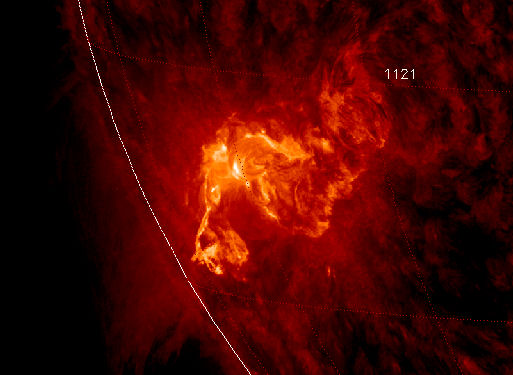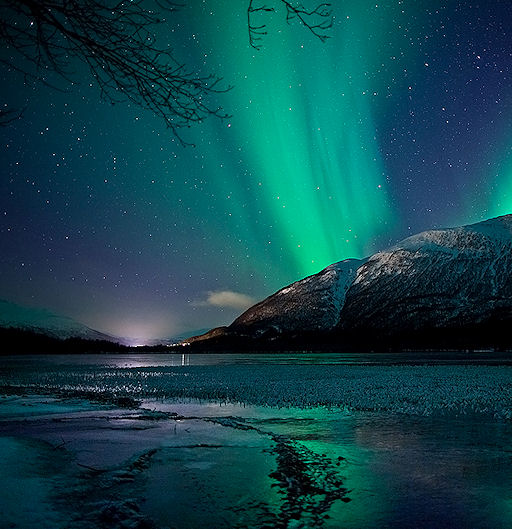SHUTTLE LAUNCH DELAYED: NASA has announced a big delay in space shuttle Discovery's last flight. The next possible launch opportunity comes Nov. 30 at 4:05 a.m. EST. The cause of the delay is twofold: a persistent hydrogen leak and a possible crack in the shuttle's external tank foam. Check the launch blog for details.
M5 SOLAR FLARE: Active sunspot 1121 has unleashed one of the brightest x-ray solar flares in years, an M5.4-class eruption at 15:36 UT on Nov. 6th. Click on the image to view a movie of the blast from NASA's Solar Dynamics Observatory:

Radiation from the flare created a wave of ionization in Earth's upper atmosphere that altered the propagation of low-frequency radio waves. There was, however, no bright CME (plasma cloud) hurled in our direction, so the event is unlikely to produce auroras in the nights ahead. This is the third M-flare in as many days from this increasingly active sunspot. So far none of the eruptions has been squarely Earth-directed, but this could change in the days ahead as the sun's rotation turns the active region toward our planet. Now might be a good time to sign up for space weather alerts.
more images: from Thomas Ashcraft near Santa Fe, New Mexico; from Rogerio Marcon of Campinas SP Brasil; from Robert Arnold of Isle of Skye, Scotland; from James Kevin Ty of Manila, the Philippines;
NORTHERN LIGHTS: A minor geomagnetic storm on Nov. 4th made the ice crack in Norway. Actually, it was the weight of the photographer that did it. Ole Christian Salomonsen walked out on the water's frozen surface to get this shot:

"I had to walk out on the ice," he explains, "because there were so many trees on shore blocking the view. The temperature was below -10 degrees celsius. You could see your breath turning to steam, and it was really silent in the woods. The only thing you could hear was the ice cracking and freezing together--a really awesome sound! The crisp clear ice made a lovely surface for catching the aurora's reflections."
The next chance for a shot like this could come on Nov. 9th or 10th when a solar wind stream is expected to hit Earth's magnetic field. It's only a minor stream, but often that's enough for a vivid display around the Arctic Circle. High latitude sky watchers should be alert for auroras.
October 2010 Aurora Gallery
[previous Octobers: 2009, 2008, 2007, 2006, 2004, 2003, 2002, 2001]
Potentially Hazardous Asteroids (
PHAs) are space rocks larger than approximately 100m that can come closer to Earth than 0.05 AU. None of the known PHAs is on a collision course with our planet, although astronomers are finding
new ones all the time.
On November 7, 2010 there were 1157 potentially hazardous asteroids.
Notes: LD means "Lunar Distance." 1 LD = 384,401 km, the distance between Earth and the Moon. 1 LD also equals 0.00256 AU. MAG is the visual magnitude of the asteroid on the date of closest approach. | | The official U.S. government space weather bureau |
| | The first place to look for information about sundogs, pillars, rainbows and related phenomena. |
| | Researchers call it a "Hubble for the sun." SDO is the most advanced solar observatory ever. |
| | 3D views of the sun from NASA's Solar and Terrestrial Relations Observatory |
| | Realtime and archival images of the Sun from SOHO. |
| | from the NOAA Space Environment Center |
| | the underlying science of space weather |

